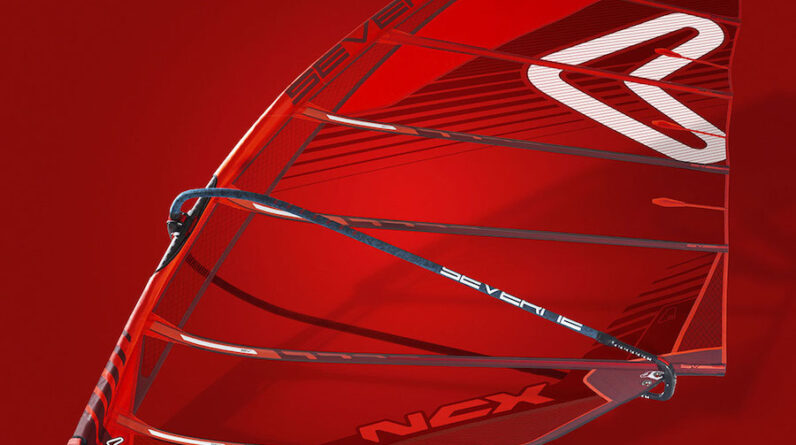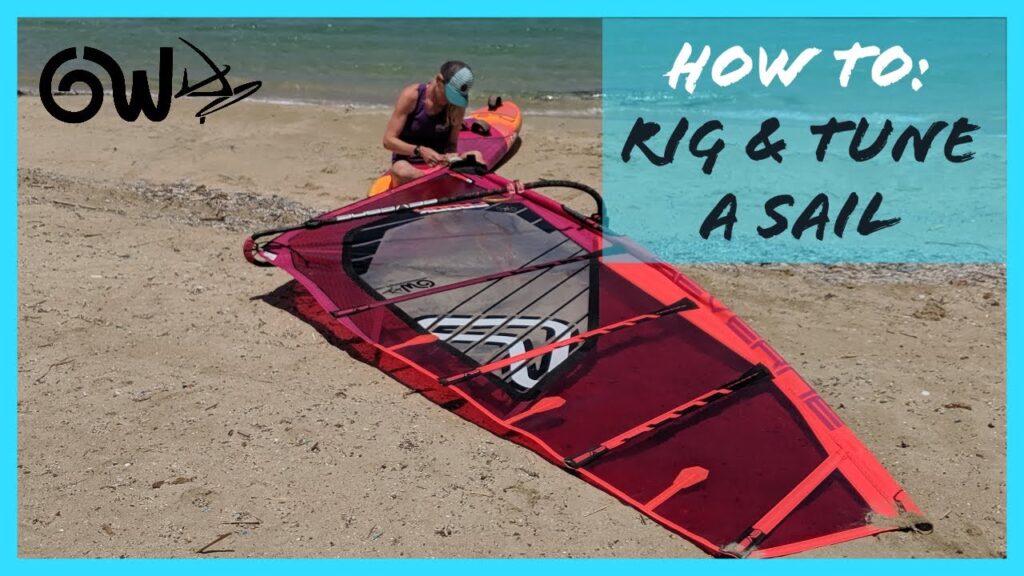
Maintaining and cleaning your windsurfing sail is essential to ensure its longevity and optimal performance on the water. Over time, dirt, salt, and other contaminants can build up on the sail, affecting its aerodynamics. By regularly cleaning and maintaining your windsurfing sail, you can remove these particles, prevent damage, and extend the lifespan of your equipment. In this article, you will discover a range of effective tips and techniques to keep your windsurfing sail in top condition, allowing you to enjoy the exhilarating experience of windsurfing for years to come.

This image is property of boardsportscalifornia.com.
Cleaning and Maintenance
Maintaining a clean and properly functioning windsurfing sail is crucial for maximizing its lifespan and performance. Regular cleaning, proper storage, and inspecting for damage are key aspects of sail maintenance that every windsurfer should pay attention to.
Regular Cleaning
Keeping your sail clean is essential for preserving its integrity and performance. After each session, it is important to remove any debris and rinse the sail with freshwater to prevent salt and sand buildup. This simple practice will help prevent unnecessary wear and tear on the sail.
Storing Properly
Properly storing your windsurfing sail is just as important as cleaning it. Before storing, ensure that you have removed all sand and dirt. Rolling the sail instead of folding it will prevent creases and potential damage. Investing in a sail bag will provide extra protection from dust and other elements that could deteriorate the sail.
Inspecting for Damage
Regularly inspecting your windsurfing sail for any signs of damage is crucial for catching problems early on. Check the seams and stitching for any loose threads or signs of wear. Repairing small tears and holes promptly will prevent them from becoming bigger issues. Evaluate the mast sleeve, luff, and foot carefully to ensure they are in good condition.
Cleaning the Sail
Properly cleaning your windsurfing sail will not only keep it looking good but also help maintain its performance on the water. Follow these steps to ensure a thorough cleaning process:
Removing Debris
After every sailing session, remove any debris such as seaweed, small twigs, or other foreign objects that may have become lodged in the sail. Gently shake the sail to dislodge any stubborn debris.
Rinsing with Freshwater
Once the debris is removed, rinse the sail thoroughly with freshwater. This will help remove salt and sand that may have accumulated during your time on the water. Pay particular attention to the areas around the battens and the foot of the sail.
Using a Mild Soap Solution
For stubborn stains or dirt buildup, using a mild soap solution can be effective. Mix a small amount of mild soap with freshwater and gently scrub the affected areas using a soft brush or sponge. Be cautious not to apply excessive force that could damage the fabric or stitching.
Avoiding Harsh Chemicals
When cleaning your sail, it is important to avoid using harsh chemicals such as bleach or abrasive cleaners. These can damage the sail’s material and compromise its integrity. Stick to mild soap solutions or specially formulated sail cleaners to ensure the best results.
Drying Thoroughly
After cleaning, make sure to dry the sail thoroughly before storing it. Hang it in a well-ventilated area and allow it to air dry completely. Avoid direct sunlight, as prolonged exposure to UV rays can cause the sail’s colors to fade and the fabric to weaken over time.
Storing the Sail
Properly storing your windsurfing sail is essential for maintaining its shape and protecting it from unnecessary damage. Follow these guidelines to ensure your sail remains in top condition during the off-season or when not in use:
Removing All Sand and Dirt
Before storing your sail, take the time to remove any sand, dirt, or other debris that may have accumulated. This can be done by gently shaking the sail or using a soft brush to sweep away any loose particles. Failure to remove sand and dirt can lead to abrasive damage over time.
Rolling Instead of Folding
It is recommended to roll the sail instead of folding it when storing. Rolling helps minimize creases and ensures uniform pressure distribution on the sail material. Creases can weaken the fabric and affect the sail’s performance when in use.
Using a Sail Bag
Investing in a sail bag is an excellent way to protect your sail from dust, moisture, and potential damage. A sail bag will keep your sail clean and shield it from sunlight and other elements that could cause premature wear. Make sure the sail is completely dry before placing it in the bag to prevent mold or mildew growth.
Avoiding Extreme Temperatures
When considering a storage space for your sail, avoid areas prone to extreme temperatures. Fluctuations in temperature, such as hot attics or freezing basements, can cause the sail material to expand or contract, potentially leading to damage. Opt for a cool, dry, and stable environment for optimal sail storage.
Keeping Away from Direct Sunlight
Direct sunlight can cause fading, weakening, and degradation of the sail material over time. This is why it is crucial to store your sail away from direct sunlight. If possible, choose a storage location that provides shade or use a protective cover to shield the sail from harmful UV rays.
Inspecting for Damage
Regularly inspecting your windsurfing sail for any signs of damage is essential for addressing issues before they escalate. Here are areas of the sail to pay close attention to during your inspections:
Checking Seams and Stitching
Inspect the seams and stitching of your sail for any signs of wear or unraveling. Loose threads or compromised seams can lead to further damage if not addressed promptly. Reinforce weak stitching or consider professional repairs when necessary.
Repairing Tears and Holes
Small tears or holes in the sail can occur over time due to normal wear and tear or accidental damage. It is important to repair these issues promptly to prevent them from growing larger. Use sail repair tape or consult a professional sail repair service for more extensive damage.
Examining the Mast Sleeve
Inspect the mast sleeve, which holds the mast in place, for any signs of wear or damage. Ensure that the sleeve is securely attached and there are no tears or fraying along the edges. A compromised mast sleeve can affect the rigidity and performance of the sail.
Inspecting the Luff and Foot
Carefully examine the luff (leading edge) and foot (bottom edge) of the sail for any signs of damage or excessive wear. Check for tears, fraying, or any weak spots that could compromise the sail’s structural integrity. Repair or reinforce these areas immediately to avoid further damage.

This image is property of boardsportscalifornia.com.
Tips for Prolonging Sail Life
To maximize the lifespan of your windsurfing sail, consider implementing these tips into your maintenance routine:
Avoiding Overpowered Sail Conditions
Using your sail in conditions for which it is not designed can put excessive strain on the material and components. Avoid overpowered sailing, as it can lead to premature wear, tear, and potential damage to the sail. Match your sail size and type to the prevailing wind and water conditions for optimal performance and longevity.
Proper Rigging Techniques
Improper rigging can lead to excessive stress on the sail and its components. Take the time to learn and practice proper rigging techniques to ensure optimal sail performance and longevity. Follow manufacturer guidelines and consult experienced windsurfers or instructors for guidance if needed.
Regularly Tuning the Sail
Properly tuning your sail ensures that it is performing at its best and reduces unnecessary stress on the material and rigging. Regularly check and adjust the downhaul and outhaul tension according to the prevailing wind conditions. This will optimize sail shape and minimize wear and tear.
Avoiding Sharp Objects
Avoid contact with sharp objects that could potentially damage your sail. Rocks, shells, or any other objects with sharp edges can cause punctures or tears. Be cautious about where you set up and launch your sail to minimize the risk of encountering such hazards.
Keeping Sail Away from Spreader Bars
When rigging or storing your sail, be careful to keep it away from spreader bars or any other sharp metal components. Contact with metal edges can cause scratches, tears, or other damage to the sail fabric. Handle the sail with care and be mindful of potential contact points.
Storing and Transporting
Properly storing and transporting your windsurfing sail is essential for its protection and to prevent any accidental damage. Follow these guidelines to ensure your sail remains safe:
Disassembling the Sail
When storing or transporting your sail, disassemble it by removing the mast, boom, and any other attached components. This will make it easier to pack and reduce the risk of damage that may occur during handling.
Using Protective Covers
Invest in protective covers specifically designed for windsurfing sails. These covers will shield your sail from dust, sun exposure, and potential abrasion or scraping when stored or transported. Covering the sail properly will ensure its longevity and keep it in top condition.
Avoiding Contact with Other Equipment
When transporting or storing your sail, avoid placing it in direct contact with other windsurfing equipment or hard surfaces. Any impact or pressure points can potentially damage the sail’s fabric, stitching, or components. Use padding or soft material between the sail and other items to provide extra protection.
Properly Securing the Sail
When storing or transporting your sail, make sure to secure it properly to prevent any movement or shifting. Use straps or bungee cords to keep the sail in place and prevent it from rubbing or bumping against other objects. A secure and stable sail will reduce the risk of damage during transport or storage.

This image is property of i.ytimg.com.
Repairing Small Tears
Despite our best efforts, small tears can occur in the sail fabric. Repairing these tears promptly will prevent them from expanding and compromising the sail’s performance. Follow these steps when addressing small tears:
Cleaning the Area
Before repairing a small tear, make sure the area is clean and free from debris. Gently clean the tear and its surroundings using mild soap and freshwater. This will ensure proper adhesion of the repair materials and prevent any dirt from interfering with the repair.
Applying Sail Repair Tape
For small tears, sail repair tape can provide a quick and effective fix. Cut a piece of sail repair tape slightly larger than the tear. Apply the tape to cover the entire tear, ensuring it extends beyond the damaged area. Press the tape firmly to ensure proper adhesion.
Using Epoxy Resin for Stronger Repair
In cases where the tear is larger or the sail fabric has suffered significant damage, using epoxy resin can provide a stronger and more durable repair. Ensure the damaged area is clean and dry before applying epoxy resin. Follow the manufacturer’s instructions for proper mixing, application, and curing of the resin.
Smoothing and Blending the Repair
After the repair has cured, use a fine-grit sandpaper to smooth and blend the repaired area with the surrounding sail fabric. This will help minimize any noticeable differences in texture and ensure a more streamlined appearance. Use a gentle touch to avoid damaging the sail or creating unnecessary friction points.
Replacing Damaged Parts
In some cases, certain components of the sail may become worn or broken beyond repair. When this happens, it is important to identify the damaged parts and replace them to maintain the sail’s performance. Follow these steps for replacing damaged parts:
Identifying Worn or Broken Components
Carefully inspect your sail to identify any worn or broken components. This can include battens, sailboard attachments, blocks, cleat systems, or any other part that is essential for the proper functioning of the sail. Keep an inventory of the sail’s components for easy reference.
Ordering Replacement Parts
Once you have identified the damaged parts, order the appropriate replacement components from a reputable supplier or the sail manufacturer. Ensure that you select the correct model and size to ensure compatibility and optimal performance.
Proper Installation Techniques
When replacing damaged parts, it is essential to follow proper installation techniques. Refer to the sail manufacturer’s instructions or seek guidance from experienced sailors if needed. Pay attention to specific assembly steps and any additional instructions for securing or adjusting the new components.

This image is property of i.ytimg.com.
Dealing with Mold or Mildew
Mold or mildew can develop on a windsurfing sail if it is stored or left damp for an extended period. These growths can cause discoloration, odor, and potential damage to the sail fabric. Here are steps to address mold or mildew presence:
Identifying Mold or Mildew Presence
If you notice black or green spots, a musty odor, or any signs of discoloration on your sail, it is likely that mold or mildew has developed. Inspect the entire sail thoroughly, paying special attention to areas that may have been exposed to moisture or stored in a damp environment.
Cleaning with Vinegar Solution
To remove mold or mildew from the sail, prepare a solution of equal parts water and white vinegar. Dampen a clean cloth with the solution and gently wipe the affected areas. Vinegar is a natural and effective cleaning agent that can eliminate mold and mildew without causing damage to the sail fabric.
Drying Thoroughly
After cleaning, ensure the sail is completely dry before storing it. Hang it in a well-ventilated area, preferably outdoors or in a dry environment. Allow the sail to air dry completely to discourage further mold or mildew growth.
Preventing Future Growth
To prevent future mold or mildew growth, it is crucial to store the sail in a dry and well-ventilated area. Avoid storing it in a damp basement or any other location prone to high humidity. Use a dehumidifier if necessary, and periodically inspect and clean the sail to catch any early signs of mold or mildew.
Professional Sail Maintenance
For the best care and maintenance of your windsurfing sail, consider professional servicing by experienced sailmakers or repair centers. These professionals have the expertise and equipment to handle more complex repairs and ensure your sail is in top condition. Here are some reasons to consider professional sail maintenance:
Considering Professional Servicing
If you are unsure about the extent of damage or require specialized repairs, professional servicing is highly recommended. Sailmakers have the knowledge and experience to assess the condition of your sail accurately and provide the appropriate repairs or maintenance.
Sail Inspections and Repairs
Professional sailmakers can conduct thorough inspections to identify any hidden damage or structural issues that may not be immediately apparent. They can also carry out intricate repairs, such as reinforcing seams, replacing sections of fabric, or repairing complex tears. Entrusting these tasks to professionals ensures the highest quality workmanship and optimal sail performance.
Sail Tuning and Optimization
If you want to maximize the performance and efficiency of your sail, professional sailmakers can provide valuable tuning and optimization services. They can fine-tune the rigging, suggest modifications, or recommend changes to enhance your sail’s performance in specific wind and water conditions.
In conclusion, maintaining and cleaning your windsurfing sail is essential for preserving its lifespan and ensuring optimal performance on the water. Regular cleaning, proper storage, and inspecting for damage are crucial aspects of sail maintenance that should not be overlooked. By following these guidelines and incorporating the tips and techniques outlined in this article, you can keep your windsurfing sail in top condition and enjoy many exhilarating sessions on the water. Remember, a well-maintained sail will enhance your windsurfing experience and make every adventure more enjoyable.

This image is property of boardsportscalifornia.com.






